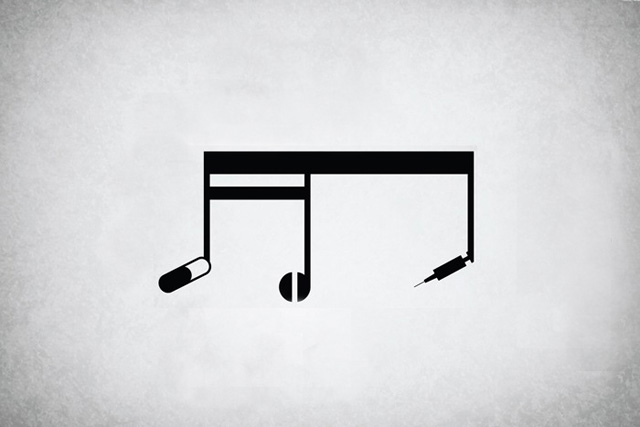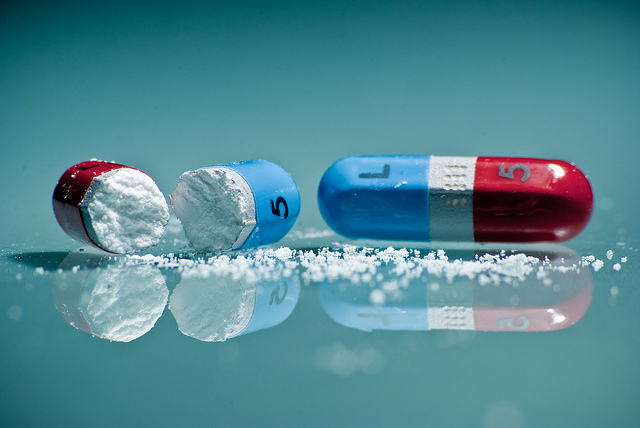23 Oct 2016
Cardiologist Dr. Doping says about of leukocyte types, variations in standards and functions of post-cellular elements. Along with cardiologist Dr. Doping we tell what elements is the blood and how to understand its analysis. Do not forget that the rules of almost all blood values are very dependent on age and sex.
Hemoglobin and red blood cells
Hemoglobin is a protein that carries oxygen. It is within the erythrocytes. The more hemoglobin, more oxygen may move the blood. The fall in hemoglobin or red blood cells is below a certain value, the order of 110-120 g / l, called anemia. The rate of red blood cells for men - 130,0-160,0 g / l, and for women - 120,0-140,0 g / l. Red blood cells - it is the red blood cells that are biconcave discs. They carry oxygen due to the presence of hemoglobin. Red blood cells lack nuclei, that is, they are from a scientific point of view, not cells, and so-called post-cellularelements. The lifetime of a red blood cell is about 3-4 months. Increasing the number of red blood cells seen in people who live in the mountains, as well as those who suffer from a specific type of blood disease, so-called erythrocytosis, and those who take a drug in the form of the hormone erythropoietin, which accelerates the formation of red blood cells. The rate of red blood cells in men - 4,0-5,0 × 1012 / L, and for women - 3,9-4,7 × 1012 / L.
The color indicator and the average content of hemoglobin
Indicators of hemoglobin inside the red blood cell, color index and the average concentration reflect how many of the key oxygen-carrying protein, is within the red blood cell. You have to understand that the key point, which reduces hemoglobin or drops of color indicator - is iron deficiency. The color indicator is calculated as 3 × Hb in g / l / three older red blood cell count category (in millions). Iron is a key part of the hemoglobin which carries oxygen inside the so-called heme. When a small shortage of erythrocytes iron produced at the same rate as before, but they contain less hemoglobin. First with a small iron deficiency begins to decrease just the volume of red blood cells and hemoglobin inside them. And only with an increase in iron deficiency, when it gets critical, already begins to decrease and the number of red blood cells. In other types of anemia, when a person lacking folic acid or vitamin B12, erythrocyte volume, in contrast, increases. The rate of color indicators - 0.85-1.05 and the average content of hemoglobin in a red blood cell - 30-35 m.
Hematocrit
Hematocrit is a total content of cellular elements in the blood volume unit. Basically hematocrit forms most of red blood cells. The percentage of cells other than erythrocytes with very little. And as hematocrit correlated with the number of red blood cells, it decreases in anemia and iron deficiency. The rate of hematocrit: men - 40-48%, women - 36-42%.
Reticulocytes
Reticulocytes are a form of immature red blood cells. They are not included in conventional analysis. Usually they say that if a person has anemia and needs to know what it is connected. That is, with anemia associated with iron deficiency reticulocyte levels may even be slightly increased. The same occurs when blood loss when you need to activate the formation of red blood cells. And with anemia associated with a deficiency of vitamin B12 and folic acid, the number of reticulocytes decreases, since due to the lack of these vitamins can not effectively share cells - red blood cell progenitors. The rate of reticulocytes - 5-12%.
Actovegin strengthens synthetic processes and thus stimulate anabolism, Improving the work of the intracellular enzyme systems,. This improves tissue regeneration, repair damage occurs.
Platelets
Platelets are devoid post-cellular core elements that are involved in blood clotting. This is a very, very small plates, which closes up vessels when they are damaged. Decrease platelets observed in various serious diseases, including cancer. Drop them below 100 × 109 is fraught with heavy bleeding. In addition, at the wrong fence blood platelets form clots, it is their aggregation. Therefore, they can often be conditions such as pseudo-thrombocytopenia when an automatic blood analyzer shows a reduced number of platelets in their normal amount. And healthy people with a lack of platelets need to be sure to count the number of platelets "by hand". The increase in the number of platelets is also the companion of a variety of pathological conditions, and it should be interpreted only in terms of the overall clinical picture. The rate of platelet - 180,0-320,0 × 109 / L.
White blood cells
Leukocytes are white blood cells, are our main defense against infectious diseases caused by bacteria, as well as become the path of cancerous degeneration of the body's own cells. The number of leukocytes is increased by a variety of inflammatory diseases and infections, for exhaustion and decreased. Normal - 4-9 × 109 / L.
Leukocytes are divided into neutrophils, eosinophils, basophils, lymphocytes, depending on the color. Neutrophils - this is the largest part of the white blood cells, the cells that fight first of all bacterial infections. We can say that this kind of regular army. These include several groups of elements. Myelocytes - a form which is typically present in bone marrow. Their presence, and still less mature blast cells in the blood test could indicate a very serious blood disease - leukemia. Metamyelocytes - "young" form appear in the case of severe infections, and it is extremely rare, when you need to release more immature forms. Immature forms into the blood when the big defenders, segmented neutrophils, is not enough.
There is a division of neutrophils in the degree of maturity: a form of neutrophil nuclei depends on the age, and by evaluating the shape of the nucleus, we estimate the age of the neutrophil. Band neutrophils are present in normal healthy people. This form is characterized by a more youthful cells. The rate of band - 1-6%. Segmented - mature segmented neutrophils typically predominate in the blood test. The rate - 47-72%.
Eosinophils - are cells that are involved in a variety of allergic reactions. In addition, they help us to deal with parasites, such as roundworms, with worms. Increasing the number of eosinophils observed in the various allergies. The marked increase in the number of eosinophils, ie above 20%, may be indicative of a very serious rheumatological (inflammatory) disease. In the absence of eosinophils and basophils can suspect the presence of severe blood disorders. When the number of other forms of leukocyte can be suspected leukemia. For them, the rate - 0.5-5%. Basophils also participate in allergic reactions. The increase in their number is marked at different allergies and some rare diseases. Norm of basophils - 0-1%.
Lymphocytes are cells of the immune system. There are many subtypes of lymphocytes, each of which performs a specific function. These cells help recognize antigens, ie determine which specific type of pathogen causes inflammation to develop weapons is against this pathogen. Guns are antibodies - large molecules that bind to specific sites on the surface of the pathogen. They are produced by B-lymphocytes. A T-lymphocytes recognize the foreign agent help and are involved in various immune processes. In addition, T-cells protect us from cancer. Reducing the amount of exhaustion observed when lymphocytes and increase - in various infections. The slight increase in the number of lymphocytes is observed after a recent infection. The marked increase in the number of lymphocytes, particularly T-lymphocytes, may be indicative of lymphoma, that is, on hematological malignancies, which are often incorrectly referred to as cancer of the blood. Average number of lymphocytes - 19-37%.
Monocytes - is one leukocyte subtype. In contrast, lymphocytes which are dotted and are set to destroy specific pathogens, monocytes are able to fight directly against a very wide range of different pathogens. They are converted into the tissue and to larger cells (macrophages) with a large number of processes. Macrophage phagocytosis is performed, that is eaten by bacteria and other microorganisms. Then they were dissolved and destroy them using different intracellular enzyme systems. Furthermore, they are also separated into individual microorganisms present their types and their lymphocytes to recognize those portions of microorganisms against which antibodies could be synthesized. Increasing the number of monocytes it is most often noted for infections, including tuberculosis. But a small increase in their number is often associated with the error of the method: not all automatic analyzers correctly determine their number. Norm of monocytes - 3-11%.
Plasma cells - this is one of the subtypes of lymphocytes, which is formed in the presence of a bacterial infection. Most of these cells are involved in the synthesis of antibodies, however, they may occur in people with bacterial infections, increases sharply when the number of cells which synthesize antibody. While there is no infection, these cells do not need, so they are not.
Speed (reaction) erythrocyte sedimentation rate is estimated as follows: choose a thin capillaries and estimated that the rate at which red blood cells settle. erythrocyte sedimentation rate depends on the composition of the blood plasma protein. Increased ESR observed in various inflammatory diseases and cancer. Women may be more speed - most likely, this is due to the peculiarities of the protein composition of blood plasma and red blood cells. Norm: men - 2-10 mm / hour, women - 2-15 mm / hour.
The morphology of the red blood cells, ie, their shape changes when a large number of various anemias. Morphology of white blood cells varies in the presence of severe infections. Indicators morphology of leukocytes is important to evaluate manually. Not all analyzers successfully evaluate the presence of atypical pathological granularity of leukocytes.

 Cart
Cart






